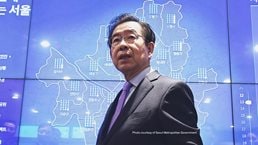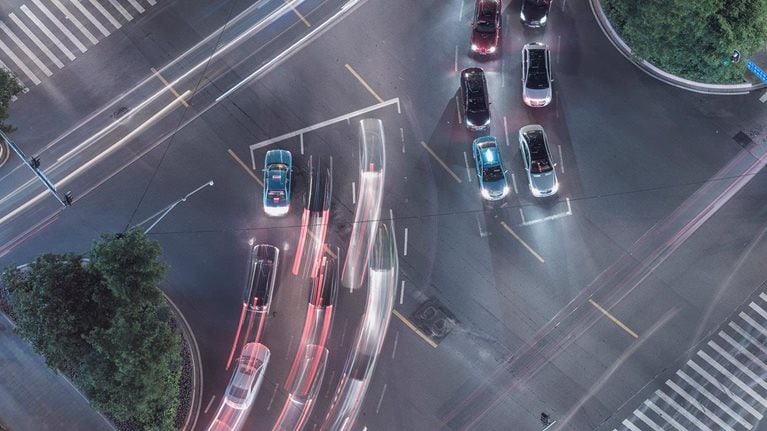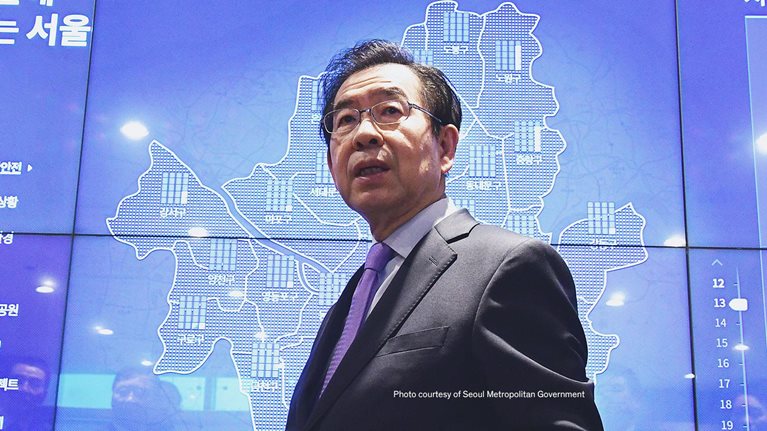Urban commuters—especially those in developed economies—have more transportation options than ever before, from private cars to rideshares to public transit. Unfortunately, largely due to low fuel prices and the relative affordability of private (and private hire) vehicles, every year more of these commuters are abandoning public transit. Bus ridership in particular has seen a precipitous decline over the past decade. And with more private vehicles on the road, congestion increases, which slows bus travel times even further and creates a vicious cycle of further ridership declines. From 2010 to 2016, for example, traffic congestion rose 30 percent in New York City, 14 percent in London, and 9 percent in both Beijing and Paris.1
Stay current on your favorite topics
In the densest urban areas, more environmentally friendly micromobility options, such as bicycles and scooters, may also be contributing to the decline in bus ridership. In London, bicycle trips increased by approximately 30 percent from 2010 to 2017.2
A decline in bus ridership is a problem because buses are critically important in cities around the world—from Seattle to Singapore. They have the potential to ease both congestion and pollution, they provide transport to jobs from low-income or rural communities that tend to be underserved by intra-city trains, and they are often the primary transport option for people with disabilities.
As the number of bus riders continues to fall, so too does the revenue municipalities have available to improve, or even maintain, quality of service. The resulting “spiral of decline” threatens the viability of buses and leaves transit authorities struggling to work out how to generate the revenues required to maintain public-transport services, let alone make meaningful investments in sustainable urban mobility. Indeed, in many cities it is unclear how transit authorities and city leaders will finance their pledges to address air quality concerns and reduce the carbon footprint of public transit by shifting to electric buses—especially given their higher up-front cost.3
There are bright spots in some parts of the world. For example, Paris has heavily supported bus development and has coordinated bus networks to fill in “cold spots” on their underground and rail networks, particularly in the outlying suburbs. In addition, Singapore’s transport authority is actively pushing a modal shift from cars to buses, swapping out its single-level fleet with double-deckers to better cope with expected increases in ridership. Buses are also gradually getting cleaner: The number of electric buses procured in Europe more than doubled in 2017 compared to 2016, and 17 percent of China’s total bus fleet is electric.
Reducing congestion, facilitating a modal shift to public transportation, and addressing environmental concerns are major challenges for transit authorities and city leaders alike. Our research shows that cities can improve both sustainability and the quality of urban mobility by improving the efficiency of existing transportation networks, starting with buses.
Would you like to learn more about our Capital Projects & Infrastructure Practice?
Buses’ role in making existing networks as efficient as possible
Cities can improve the efficiency of transit networks by providing multiple, viable, and complementary modes of transport, and buses play an important role in this endeavor. Compared with metro or rail systems, bus networks can ramp up service—serving more people or new and underserviced areas—rapidly and without much additional infrastructure. A 2019 TransitCenter study, which looked at 2018 ridership data from transit agencies across the United States, found that reorienting bus networks to meet demand is demonstrably linked with increasing ridership.4
An important aspect of making buses attractive is striving for transit time that is comparable to private cars. Stockholm’s PRIBUSS system, for instance, gives priority to buses at traffic lights to help keep things moving. Cities can also implement all-door boarding and off-board payment to expedite journeys. And sending real-time updates and alerts to passengers can make taking the bus more predictable and user friendly. Furthermore, some lanes or streets can be designated as bus only.
Lowering the cost of buses relative to private cars is also important. One approach to consider is introducing congestion charging zones, which are priced to reflect demand on road space and the level of pollution a vehicle generates. While congestion zones are often contentious and politicized decisions, such strategies have proven successful in cities such as Milan, Singapore, and Stockholm. Earlier this year, lawmakers in New York City agreed on a plan to implement a congestion tax in Manhattan, which will be the first in the United States.

The year of future transportation: An interview with Seoul Mayor Park Wonsoon
Integrate bus networks into broader urban infrastructure
In addition to incentivizing bus ridership over private car use, transport authorities should take greater steps to integrate bus networks with overall city infrastructure, particularly as the urban environment responds to new mobility trends such as electrification and autonomy, for example:
- Supporting the next generation of bus services by building a network that combines an electrified bus rapid transit (BRT) system with smaller, on-demand, zero-emissions vehicles to deliver riders to BRT hubs.
- Reducing the number of delivery vehicles on the road by utilizing public infrastructure, perhaps by introducing delivery lockers for commuters at metro stations; or creating a road pricing or regulatory environment that incentivizes night deliveries, making greater use of times when the road space is underutilized.
- Creating opportunities for affordable housing within transit hubs. Quieter, cleaner, electric buses could lead to residential units being developed above existing bus depots, for example. If this were achieved, it would address multiple objectives—for example, Transport for London has strategic objectives to increase affordable housing as well as provide transport services. Housing and transportation should be complementary, working to increase access and convenience for all citizens.
- Striving to better understand consumer preferences and user journeys to help shift behavior at critical decision points. While it is intuitive that customers prioritize speed, price points, and a comfortable experience in their transit decisions, city leaders would benefit from better understanding how these priorities differ based on time of day, day of week, and location for different customer segments within a city.
As public transport authorities consider options to improve the quality of life for citizens, they face a series of financial and political constraints. Simultaneously, they seek to improve the relative cost and journey time of public transport compared with private and for-hire vehicles, expedite the arrival of zero-emissions buses, and balance the books—all at a time when bus ridership and associated revenue are falling.
Two major levers that could help achieve this— emissions-linked congestion charging and reducing the road space available for private vehicles— require significant political and financial capital. As city leaders determine their willingness to impose such restrictions, transport authorities are thinking more creatively about other levers they can utilize. For example, how can the growth in power demand across the city, and associated private-sector investment, be used to roll out power for electric buses? Furthermore, how can authorities work with logistics companies to consolidate parcel delivery to citizens and influence the time of day business deliveries occur?
Mobility is evolving faster than nearly any other part of the urban built environment. Even as cutting-edge technologies such as air-mobility and autonomy take shape, city leaders must begin to consider how to better use the assets they have now to solve financial, environmental, and other challenges on the horizon.

